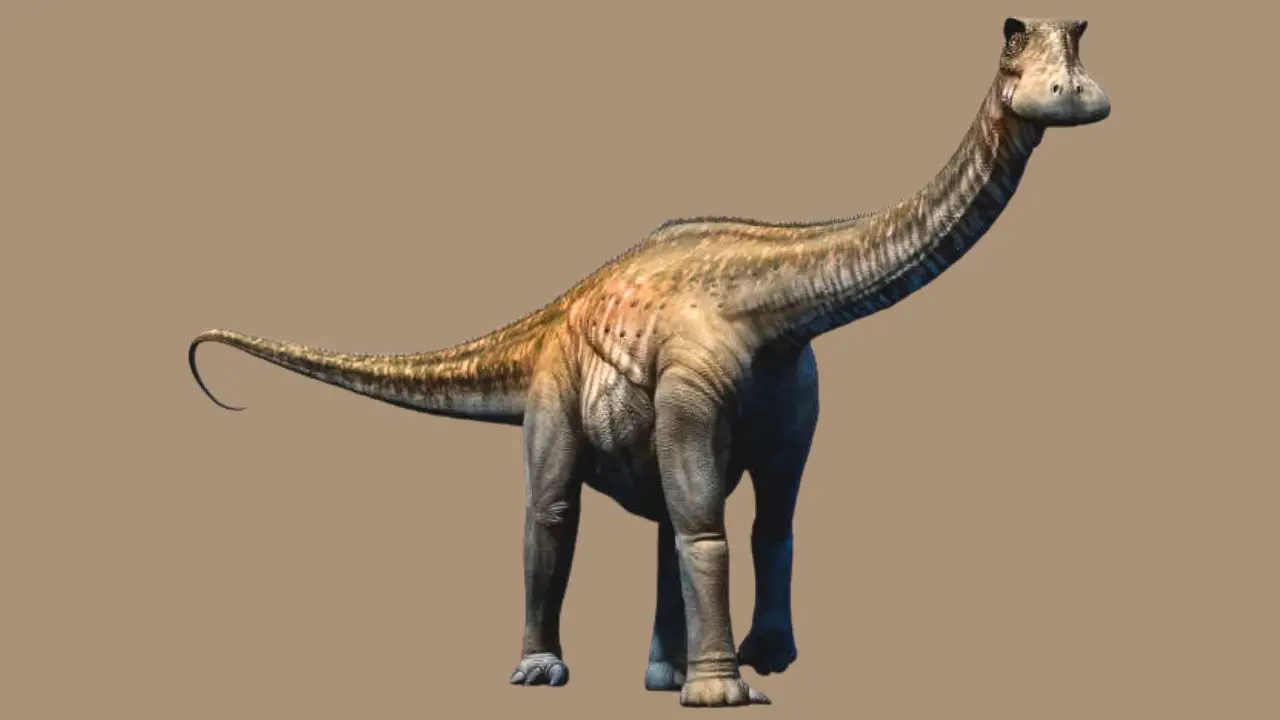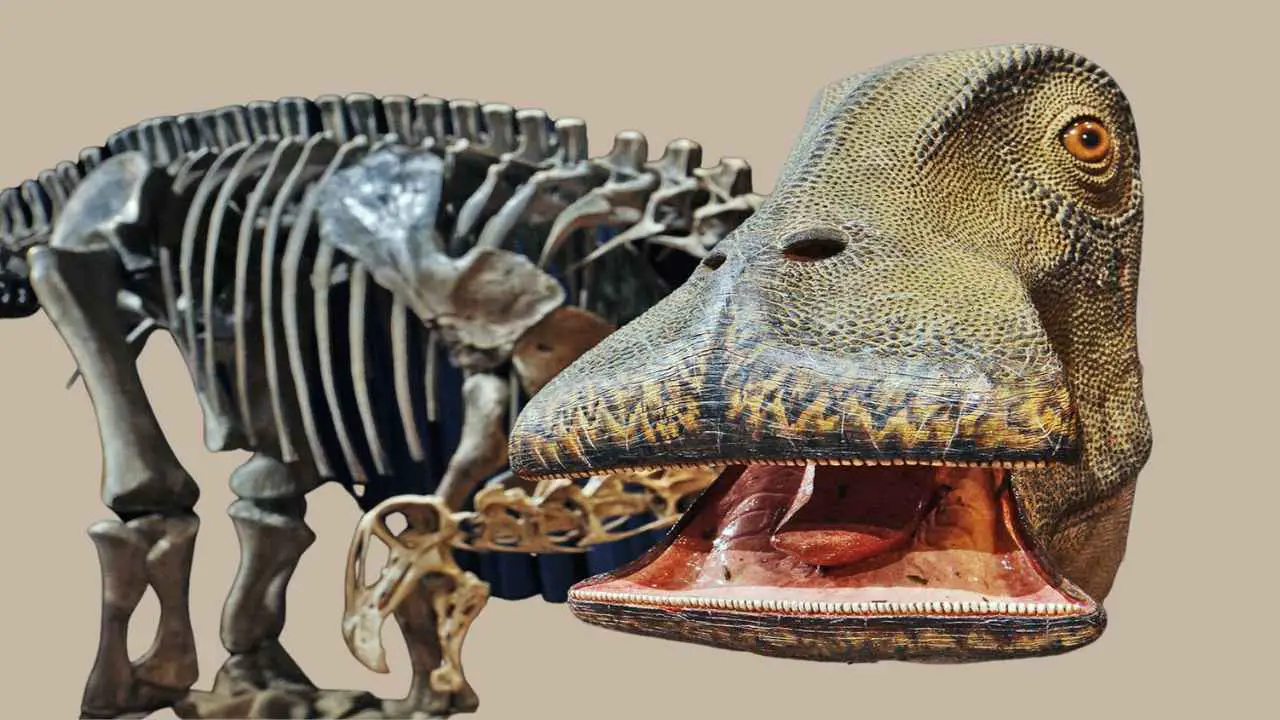Among the myriad of dinosaurs that once roamed our planet, the Nigersaurus stands out, not for its size or ferocity, but for its remarkable dental structure. With an astonishing 500 teeth, this dinosaur offers a unique glimpse into the evolutionary adaptations of prehistoric creatures. Let’s explore the world of the Nigersaurus and its fascinating dental anatomy.
What Animal Has 500 Teeth
Nigersaurus and Its Discovery:

Nigersaurus, a rebbachisaurid sauropod from the middle Cretaceous period, was discovered in the Elrhaz Formation in Niger. Its name, which means “Niger’s lizard,” was given following the discovery of more complete remains in 1999, although its fossils were first described in 1976.
The 500 Teeth Phenomenon:

Nigersaurus had a jaw structure unlike any other dinosaur. Its broad, squared-off muzzle housed over 500 slender, pencil-like teeth. These teeth were not evenly distributed but were arranged in columns and rows, with as many as nine replacement teeth behind each active tooth. This means that as one tooth wore down or broke off, another was ready to take its place. This rapid tooth replacement cycle, occurring approximately every 14 days, ensured that Nigersaurus always had functional teeth to process its food.
The teeth’s unique shape and arrangement were perfectly suited for its feeding habits. The slender, chisel-like teeth could efficiently snip off soft vegetation, and their rapid replacement ensured that the dinosaur could continuously feed without waiting for new teeth to grow.
Feeding Habits and Dental Adaptations:

The Nigersaurus was a ground-level browser. Its wide muzzle, combined with its numerous teeth, allowed it to take in large amounts of vegetation in a single bite. The orientation of its teeth, all positioned at the front of its jaws, enabled it to effectively crop and gather food close to the ground. The rapid tooth replacement suggests that it primarily fed on soft, abrasive plants, which would wear down its teeth quickly.
Significance in Paleontology:
The dental structure of Nigersaurus provides invaluable insights into the dietary and ecological adaptations of sauropods. Its unique dental arrangement and rapid tooth replacement mechanism highlight the diverse evolutionary strategies that dinosaurs employed to thrive in their environments.
Comparison with Other Dinosaurs:
The Nigersaurus, with its staggering 500 teeth, presents a fascinating contrast to its dinosaur relatives, especially other sauropods. Unlike its cousins with fewer, thicker teeth, the Nigersaurus’s slender, pencil-like teeth were uniquely adapted for snipping soft vegetation, a stark difference from the robust teeth of sauropods like Brachiosaurus, which were likely designed to handle tougher plants. This intriguing variation showcases the diverse strategies dinosaurs developed to thrive in their environments. The Nigersaurus’s rapid tooth replacement, occurring every 14 days, is also remarkable, setting it apart from other sauropods that had slower tooth turnover.
Habitat and Ecosystem:
The Nigersaurus roamed the lush landscapes of the middle Cretaceous period, in what is now the Sahara Desert of Niger. This area, once teeming with life, provided a rich tapestry of soft, leafy vegetation that was ideal for the Nigersaurus’s specialized diet. The dinosaur shared its habitat with a variety of other creatures, from small, swift predators to larger, armored dinosaurs. Alongside the Nigersaurus, plants like ferns, cycads, and early flowering plants flourished, creating a vibrant ecosystem.
Fossil Discovery and Research:
The journey to uncover the secrets of the Nigersaurus began with the first fossil fragments discovered in the 1970s in the Elrhaz Formation of Niger, but it wasn’t until 1999 that more complete remains brought this fascinating dinosaur into the spotlight. These discoveries presented paleontologists with both challenges and opportunities. The fragile nature of the Nigersaurus’s slender teeth and delicate skull made excavation and preservation particularly difficult. Yet, these challenges were met with innovative techniques in fossil recovery and 3D reconstruction, allowing scientists to piece together the intricate details of its jaw and the astonishing array of 500 teeth.
Evolutionary Significance:
The Nigersaurus, with its extraordinary dental array of 500 slender teeth and a broad, squared-off muzzle, serves as a remarkable window into the evolutionary paths that dinosaurs took to adapt to their environments. This specialized feeder, unlike many of its sauropod relatives, evolved to snip and consume soft, abundant vegetation close to the ground, revealing a unique niche in the Cretaceous ecosystem. The rapid replacement of its teeth, every 14 days, suggests that the Nigersaurus faced significant evolutionary pressures to maintain a constant supply of functional teeth to cope with abrasive plant material. This adaptation underlines the evolutionary imperative to optimize feeding efficiency in an environment where food sources varied and competition was fierce.
The Nigersaurus, with its 500 teeth, showcases the marvels of evolution. Its specialized dental anatomy, tailored to its environment and diet, serves as a testament to the adaptability and diversity of prehistoric life. As we continue to study this fascinating creature, we are reminded of the intricate and diverse paths that evolution can take.










